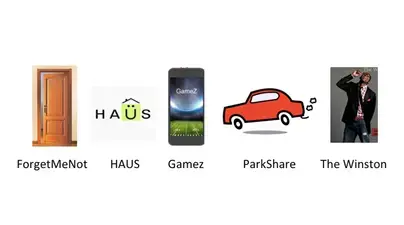Information and Knowledge Strategy leadership is both intrapreneurial and entrepreneurial. It’s not just about automating the back office – it’s about building what the customer buys.
By Katrina Pugh | Lecturer, IKNS
Tom Stewart, Executive Director for National Center for Middle Market, and Kate Pugh Academic Director of Columbia School of Professional Studies’ Information and Knowledge Strategy Master’s program (IKNS) described this in their article, “Knowledge is the Business,” (Ark Group, 2013).
A digital product is special because it instills or distills data and insight into its value proposition. In IKNS, we call this a “Knowledge-Driven Digital Product,” or KDDP. This is a self-contained application or ecosystem that incorporates content (e.g., industry, weather, or demographic data), domain expertise, and user- or crowd-interaction into something that delights a customer or solves a problem. Anyone can collect data, but it takes unique inventiveness to make a KDDP. Here are some examples of digital product inventiveness IKNS students learn:
- Aggregation and synthesis,
- Auctions,
- Auto-tagging or auto-classification,
- Benchmarking,
- Collaborative filtering,
- Crowd-sourcing,
- Juxtaposition,
- Personalization,
- Prediction,
- Quantification, scoring, and
- Visualization or mapping.
Take, for example:
- Angie’s List, which aggregates small business profiles, crowd-sources reviews, juxtaposes options, and incorporates your preferences
- Fidelity.com, which aggregates and juxtaposes bonds by maturity, grade, coupon rates and other conditions
- Grammarly, which uses its knowledge of language to auto-tag, quantify and score grammar in your writing
- Epocrates, which helps physicians quickly look at up to date therapeutic data and drug interactions that have been aggregated, synthesized, and scored
Students in the Information and Knowledge Strategy master’s program at the Columbia School of Professional Studies get a chance to put these concepts into action in two classes, the Knowledge-Driven Product Innovation elective and the Findability and Innovation core course. Student teams plan, wireframe, and business-justify a KDDP. Both are led by Ralph Poole and teams of IKNS instructors.
Using the Lean Launch Pad process, elective students create a one-page Business Model Canvas, which records core business elements, such as target segments, value propositions, delivery team roles, channels, and suppliers. Student teams act as learning organizations, talking to likely customers across several interview rounds and validating each section of the canvas. Customer interviews reveal the viability and competitiveness of the KDDP — often leading pivots, such as shifting from a consumer to a business segment or paring back the feature set to the bare minimum. This flexible, data driven process fits well with the IKNS mindset: curious, flexible, risk-taking, and data-driven.
In seven rounds of student project teams across both courses, IKNS has yielded remarkable product ideas. At the end of each course, student teams present their business models to “investors” (dubbed “KDDP Ventures”). The types of products have ranged from sentiment analysis to sports fandom. For example, The Winston (Fall 2014), offers easy price and style-shopping for “men of short stature.” ForgetMeNot (Summer 2016) aggregates to-do lists for busy parents as they leave the house. ParkShare (Summer 2016) is the “Airbnb” of parking, using GPS and auctions to match parkers to owner-owned and shared parking spots. These ideas embody KDDP concepts, such as juxtaposition, personalization, and crowdsourcing. Most importantly, students have the experience of planning entire companies around these products.
Knowledge-Driven Digital Products Student Team Examples

Products and their Leading KDDP Capability
ForgetMeNot (2016 summer)
Personalization
ForgetMeNot aggregates just in time to-do lists for busy parents as they leave the house.
HAUS (2013 fall)
Synthesis
HAUS synthesizes and juxtaposes data about the community for would-be movers, crowdsourced from local neighbors.
ParkShare (2016 summer)
Crowdsourcing
ParkShare is the AirBNB of parking, leveraging geo-location to match parkers to owner-owned and shared parking spots.
GameZ (2015 summer)
Aggregation
GameZ uses sensor data, crowdsourcing and virtual reality to combine player statistics and the real-life experience of play.
The Winston (2014 fall)
Juxtaposition
The Winston provides easy price and style-shopping for “men of short stature.”
These are the early days of IKNS innovation. Over 20% of IKNS students enter the first-semester Findability and Innovation as entrepreneurs. Based on informal interviews, IKNS appears to be graduating entrepreneurs and product innovators at twice that rate. Students have said that the IKNS innovation courses have inspired them, even if they didn’t go on to pursue the product they conceived during their studies. One student wrote, “I have created knowledge products as an intrepreneur for the past 10 years, but am looking to become an entrepreneur producing innovative ideas. This class was invaluable to my learnings on how to begin the process.”



